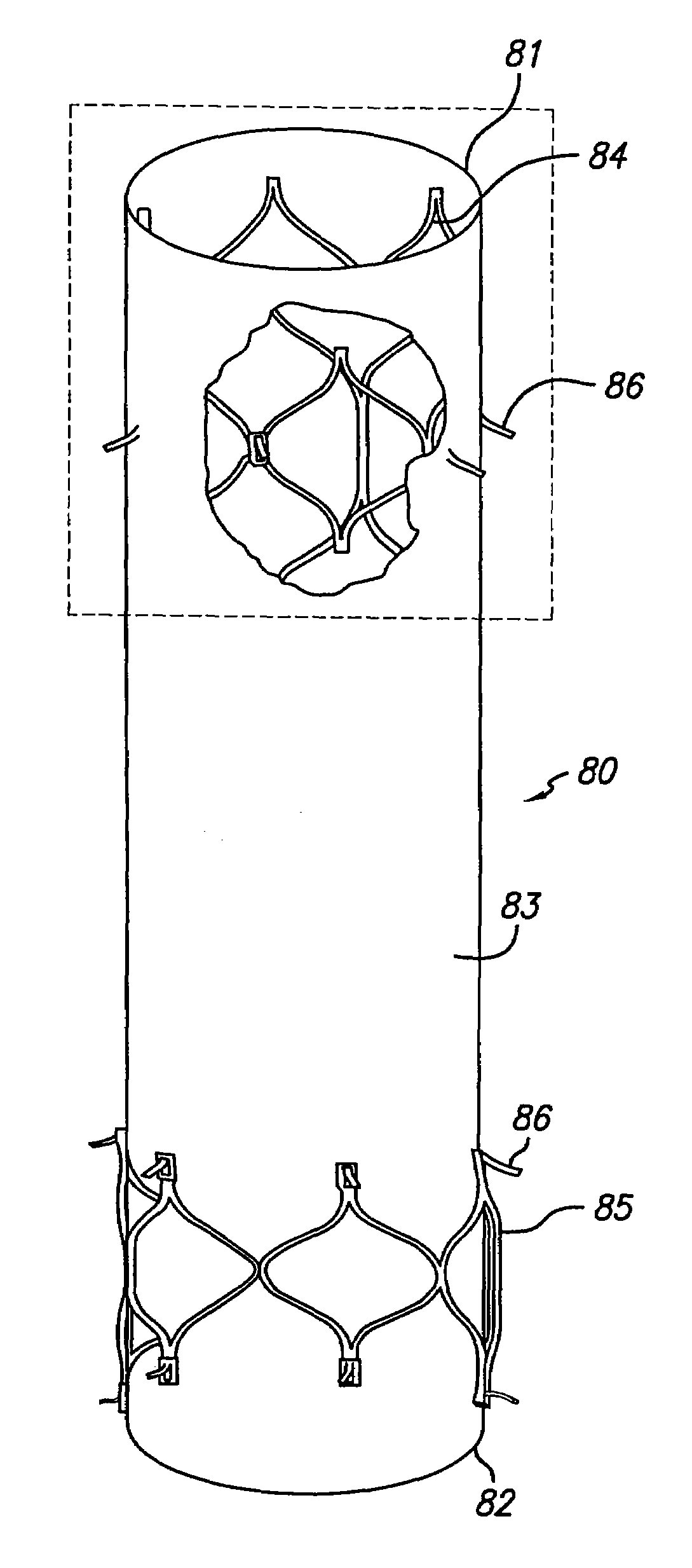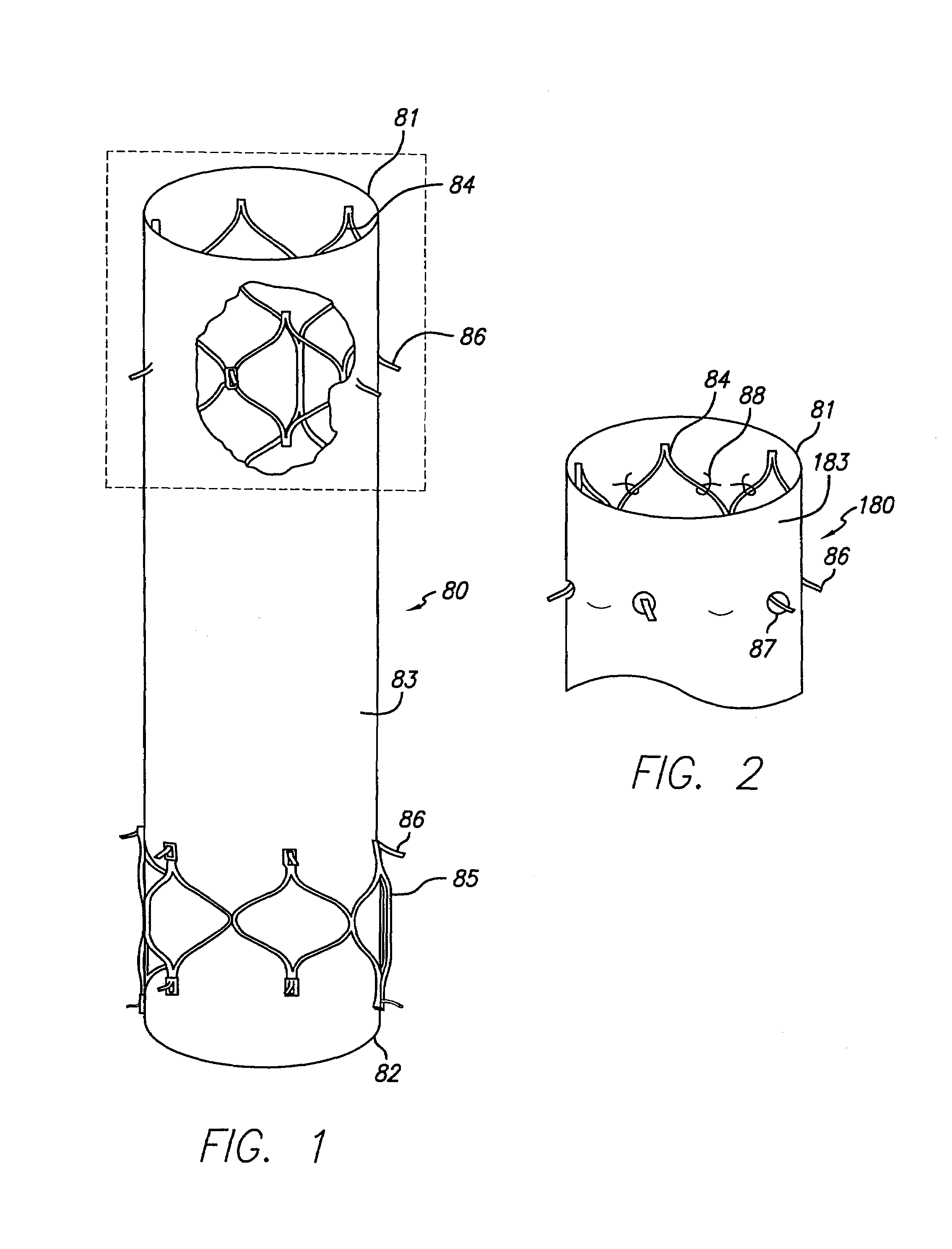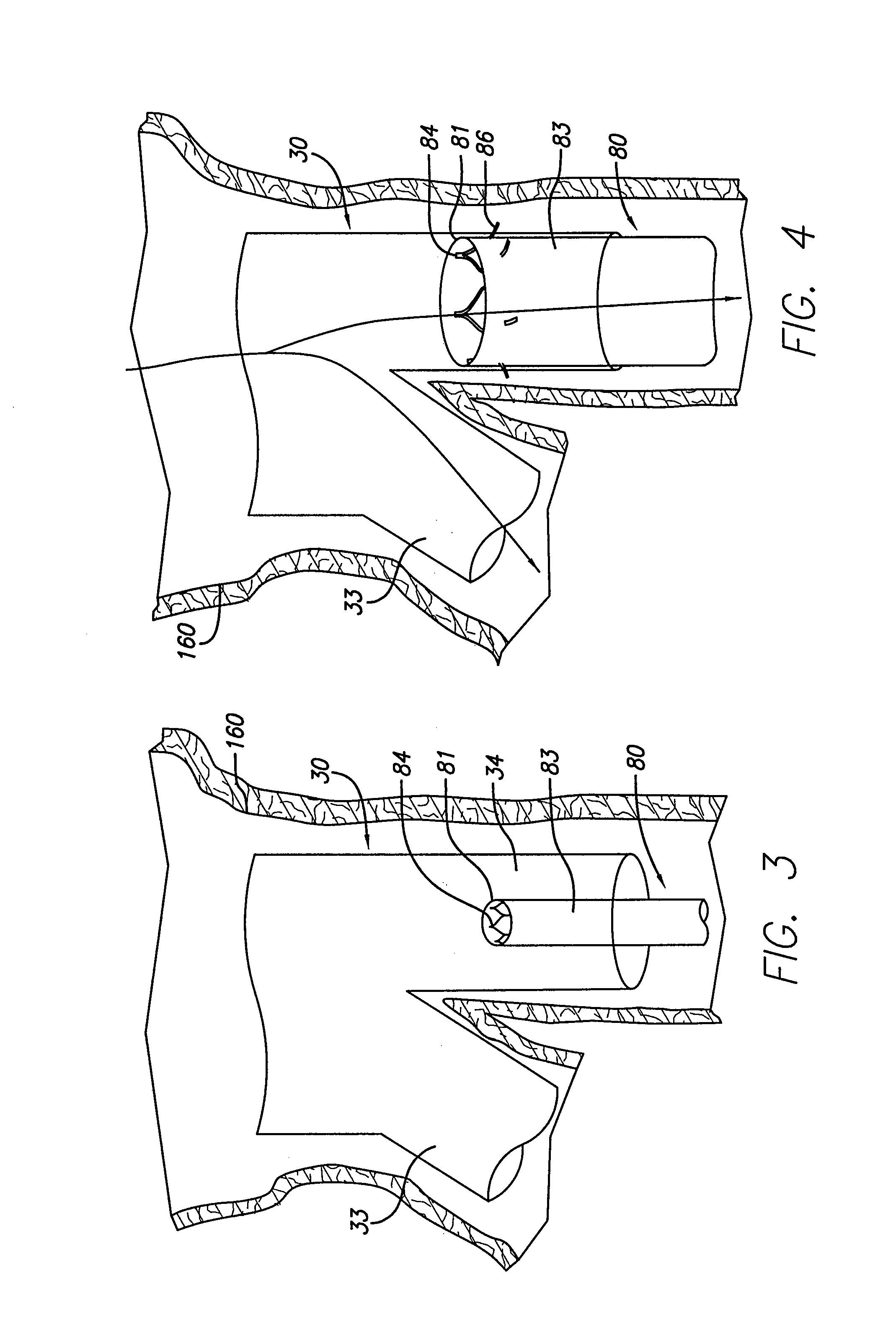Modular graft component junctions
a module-based, limb-part technology, applied in the field of endovascular graft delivery and deployment, can solve the problems of life-threatening, significant life-threatening or significant morbidity of surgical repair, and the inability of the lumen to conduct, so as to promote blood clotting, and reduce trauma and wear of the limb-part graft material
- Summary
- Abstract
- Description
- Claims
- Application Information
AI Technical Summary
Benefits of technology
Problems solved by technology
Method used
Image
Examples
Embodiment Construction
[0054]The present invention relates to an endovascular graft which is assembled in-vivo from components, and methods for attaching and securing the individual components.
[0055]FIG. 1 shows a limb component 80 that is one aspect of the present invention. The limb component has a proximal end 81 with a proximal stent 84, a distal end 82 with a distal stent 85, and graft material 83. The proximal stent 84 is located internal to the graft material and is self-expanding with a series of caudal hooks or barbs 86 which puncture the graft material of the main body limb portion when the stent 84 is deployed. The proximal stent 84 is designed to be attached to a limb support portion 33, 34 of the main body component 30 of a bifurcated endovascular graft. (See FIGS. 3 and 4). The distal stent 85 is also self-expanding and is designed to be attached to the vessel wall to anchor the distal end 82 of the limb component 80. Although shown external to the graft material with a series of caudal hook...
PUM
 Login to View More
Login to View More Abstract
Description
Claims
Application Information
 Login to View More
Login to View More - R&D
- Intellectual Property
- Life Sciences
- Materials
- Tech Scout
- Unparalleled Data Quality
- Higher Quality Content
- 60% Fewer Hallucinations
Browse by: Latest US Patents, China's latest patents, Technical Efficacy Thesaurus, Application Domain, Technology Topic, Popular Technical Reports.
© 2025 PatSnap. All rights reserved.Legal|Privacy policy|Modern Slavery Act Transparency Statement|Sitemap|About US| Contact US: help@patsnap.com



